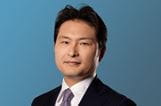Japan’s shifting attitudes change M&A market dynamics
Related people
Headlines in this article
Related news and insights
Publications: 03 April 2024
Chief Information Security Officers and cyber whistleblowing: considerations for PE firms
Publications: 21 March 2024
Publications: 21 March 2024
Publications: 21 March 2024
Driven by changing attitudes and economic priorities, Japan remains a powerful outbound investor and is becoming an increasingly popular destination for inbound transactions.

Japan’s transaction market, brought to a near standstill when the Covid-19 pandemic struck, as were so many other jurisdictions, has recovered strongly this year with both outbound and inbound investment gathering pace.
But that recovery masks a number of significant changes in attitudes and economic priorities that, together, have transformed the dynamics of this market in important ways.
Outbound investment – the focus shifts
The impetus for Japanese companies to complete outbound deals remains familiar:
- businesses are constrained by a shrinking domestic market and need to look overseas for growth
- in doing so, they are focusing much more intently on - top - rather than bottom-line growth and know they can find that most quickly in faster-growing economies.
Bolstered by big reserves of cash, ready access to debt finance at affordable rates and a highly supportive banking system, they continue to look for outbound opportunities.
But the focus of these investments has shifted, away from a concentration on traditional manufacturing assets towards softer targets. It’s notable that the two biggest outbound deals this year have been by Hitachi and Panasonic, both targeting U.S. software developers.
It remains to be seen if this change of direction is short lived. Is it, for example, down to the difficulty of doing more traditional deals while Covid-related travel restrictions made the job of assessing manufacturing sites much more difficult?
That is possible. But the likelihood is this trend will continue, not least as Japan tries to catch up with its competitors in making the transition from traditional manufacturing to a digital economy.
The U.S. remains a key outbound market for Japanese investment, accounting for some 40% of overseas transactions, as does Western Europe.
But the focus on Asian markets also continues to intensify, where investment in low-cost manufacturing has shifted from China to other countries, such as Vietnam. Japan is increasingly ready to invest in Asian economies with an expanding middle class, although appears to favour ASEAN countries over China, in this regard.
Climate change is also forcing Japan to reassess its energy needs and current dependence on imported fossil fuels such as coal and LNG, a trend that is likely to propel significant infrastructure investment at home and abroad.
With public opinion still opposed to nuclear, following the Fukushima disaster, there is a strong move towards renewables, including solar, onshore and offshore wind, and, potentially, imported hydrogen – a fuel that Toyota, unlike many of its competitors, sees as the future of mobility.
Inbound investment on the rise
In the past, strategic investors into Japan have often struggled to secure much-needed synergies from the businesses they buy.
But there are clear signs that investors are looking afresh at this market and gaining a far greater insight into the workings and attractions of Japan as an attractive investment destination. A pre-pandemic surge in tourism to Japan has brought greater global attention and only served to reinforce this view.
Other factors are at play, including:
- while trade tensions between China and the U.S. persist, investors with dedicated resources to invest in Asia are diverting their spending away from China, with Japan emerging as an important alternative
- a growing number of big U.S. PE funds – including Bain, KKR and Carlyle - have made significant and successful acquisitions in Japan and are betting that its transaction market will continue to recover strongly, opening up further opportunities
That’s particularly true as Japan’s giant conglomerates continue to reorganise their balance sheets, revise their strategies and dispose of non-core businesses.
Here, Hitachi in particular has led the way, but others, particularly in the electronics sector, continue to follow suit. NEC, for example, has transformed itself from a consumer electronics company into a software infrastructure business.
This move towards restructuring reverses a tradition in Japanese commerce, where business disposals were once viewed as a sign of failure. Now, the commercial logic of transforming the business to focus on core assets is widely recognised in the market and activity is picking up.
Hitachi’s USD8bn sale of its chemicals business to Showa Denko in 2020 is a case in point. Now Showa Denko is itself rationalising its own portfolio with the sale of its aluminium business to PE buyers.
Japan cross-border M&A activity, Q3 2021

Financial investors in the lead
PE funds and other financial investors are welcoming the change in corporate attitudes and are at the forefront of inbound investment for two clear reasons:
- they have a massive amount of firepower which they are under pressure to invest
- they do not have a need to look for synergies in the target company, unless they are specifically pursuing a buy-and-build strategy
Attitudes to PE investors have transformed in recent years, in recognition that they have an important role to play in increasing the efficiency of Japanese companies.
By contrast, in the early 2000s, they were often thought of in the same way as a group of aggressive activist shareholders who were widely regarded as vulture capitalists.
Interestingly, having largely failed to gain traction with shareholders in the past, activists have also changed their approach. Their preference now is to negotiate behind the scenes with boards rather than mount damaging and highly public campaigns.
Strategic investors are also involved and the experience of other markets is being repeated here: where financial investors lead, strategic buyers tend to follow.
Auction processes are preferred over bilateral deals, and they are attracting high levels of competition from funds and strategic buyers, pushing multiples up.
U.S. PE funds have successfully acquired some big-name businesses. The acquisition of Toshiba’s semiconductor business in 2017 by a consortium led by Bain Capital is a prime example. Bain is now looking for opportunities to grow its presence in the chip market.
But inbound interest in the Japanese market is coming from other parts of Asia too, notably Singapore, China, Thailand, Taiwan and South Korea.
Indeed, companies like Foxconn, which bought Sharp’s TV monitor business, Lenovo’s joint venture with NEC to make PCs, and Haier, which bought Sanyo’s white goods business, were amongst the earliest to spot opportunities as Japanese conglomerates disposed of non-core assets.
One other significant cultural change is in attitudes towards hostile bids, once seen as very unwelcome in the market.
Following several domestic hostile takeovers, these are now seen as more acceptable. Gradually, the market is also beginning to warm to the idea of inbound unsolicited offers.
Related expertise






